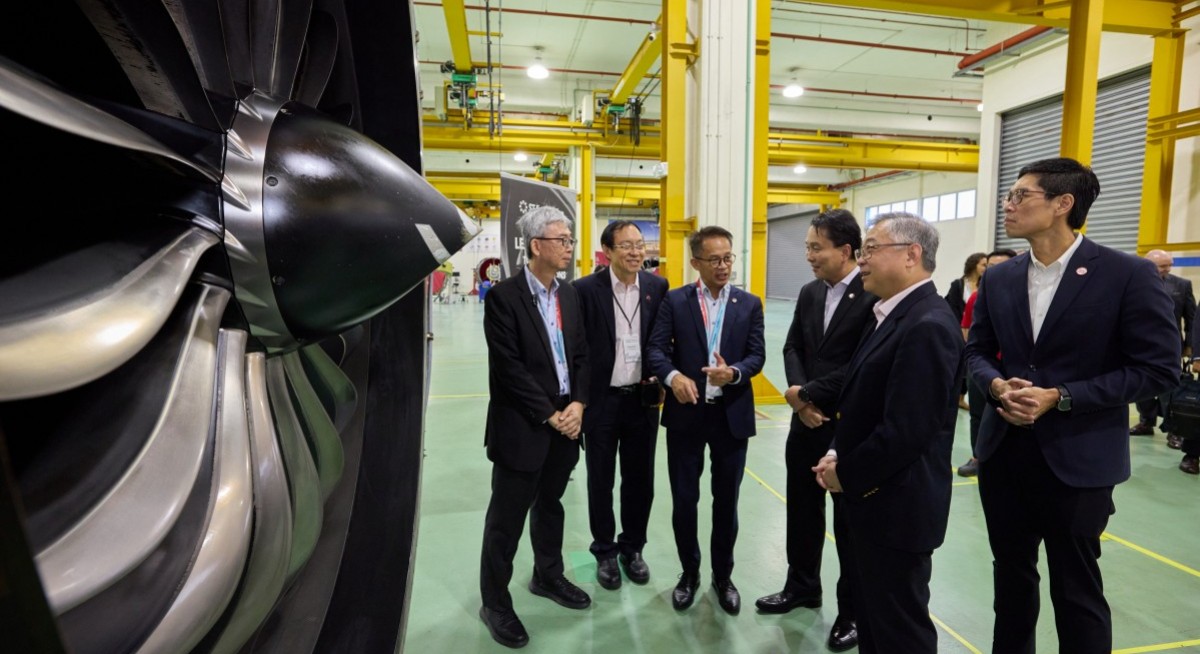Combined with ST Engineering’s existing facility in Xiamen, China, the group’s total shop engine visits is on-track to exceed 400 by 2027.
CA president Jeffrey Lam says: “There are over 4,000 LEAP-powered aircraft in service today, and this number is expected to grow quickly. Since becoming a CFM LEAP Premier MRO provider, we have inducted 88 LEAP engines and will be inducting our 100th LEAP engine by November, a key milestone on our LEAP engine MRO journey.”
Along with this expansion, the group will also be broadening its services to include performance restoration and full overhaul services for both LEAP-1A and LEAP-1B engines.
A full engine overhaul falls within the field of MRO, typically involving the complete disassembly, inspection and reconstruction of an engine, replacing all worn or damaged parts to restore it to a like-new condition. Lam notes that ST Engineering will be ready for this work scope come the first quarter of 2026 for both LEAP engine models.
See also: India plans more incentives for aircraft leasing in tax oasis — Bloomberg
He adds: “Besides engines, our CA business also provides comprehensive nose-to-tail MRO solutions covering airframe, component, landing gear and nacelle systems to airlines, freight and leasing customers.”
Ideally, the group will aim to create over 300 “new, high-value” jobs for its engine MRO operations in Singapore to meet the ramp-up in capacity.
Also present at the facility’s opening was Deputy Prime Minister Gan Kim Yong and Economic Development Board (EDB) managing director Jermaine Loy.
See also: Emirates dashes hope for new Airbus A350 order amid engine woes
According to Loy, Singapore accounts for 10% of global MRO output, and close to 20% of global engine MRO output. This means that globally, about 1 out of 10 aircraft and 1 out of 5 engines are serviced here.
“We are building on these attributes to continue growing the aerospace industry, aligned with Singapore’s Manufacturing 2030 Vision of growing our manufacturing value-add by 50% by 2030,” says Loy.
Integrated robotics and AI
While ST Engineering’s new facility will see additional manpower to meet its needs, it and other existing facilities are equipped with what the group terms “smart solutions” and a “digital-first approach”, encapsulating artificial intelligence (AI) driven technologies, automation, internet of things (IoT) and data analytics.
One such example where these solutions are implemented can be seen in the inspection of an engine. The AI visual evaluation technology or AI-VET, makes use of a robotic arm on which a camera is mounted to capture detailed images and inspect an engine’s exterior. The captured images then make use of AI to identify and flag missing or damaged components.
Although this process does not completely eliminate the need for manpower, with a final inspection through the human eye needed, technicians are not required to view an engine from above, which can typically measure a few metres across in diameter, thus reducing safety risks.
Another process where ST Engineering is making use of robotics is in its automated fan frame abradable machine. An abradable is a soft layer made of epoxy resin and other compounds applied along the interior circumference of an engine to ensure a complete seal and efficient air intake when an aircraft engine is running.
To stay ahead of Singapore and the region’s corporate and economic trends, click here for Latest Section
As the blades of an engine run, they rub along the abradable, resulting in wear and tear over time. Without the use of automation, engineers typically have to grind away the old, worn, abradable seal, before applying a new one.
The removal of this seal is a safety risk, as the particles released during this process are toxic to people if inhaled. The machine, which also makes use of a robotic arm, grinds and instantly vacuums away any debris produced. After which, a new epoxy resin layer is applied by the machine and the abradable coating goes through a final finishing process.
“An engineer would typically take up to 6 days to complete the job for one engine. With this, the time taken is cut to around 3 and a half days,” says a technician.
ST Engineering also makes use of collaborative robots or ‘cobots’ for more complicated tasks. When CFM engines are sent for servicing, the fan blades within have to be removed for inspection, before being reassembled.
As there are some 1,667 interior blades and vanes in every CFM engine, the manual removal, counting and quality inspection of each fan blade can be an exhaustive chore.
The group’s iMAP machine automatically carries out this undertaking, at the same time weighing each blade to ensure an even weight distribution once assembled back into an engine.
EDB’s Loy notes that ST Engineering has also built on partnerships with local small-and medium-sized enterprises (SME) to enhance productivity, pointing to its collaboration with local company Automatic Controls and Instrumentation to improve the 3.5-hour manual process of cutting, moulding and repolishing engine components into an automated system that now takes 15 minutes.
As at 5.05pm, shares in ST Engineering are trading 2 cents higher, or 0.25% up at $8.17.




